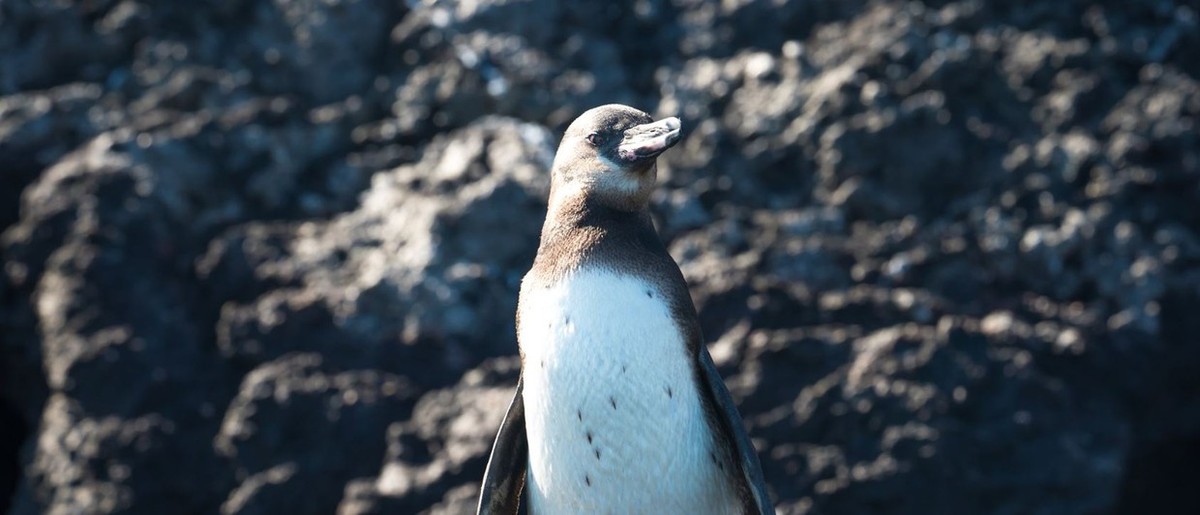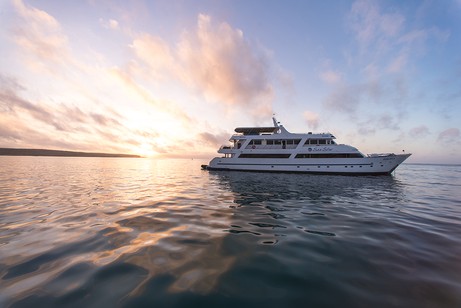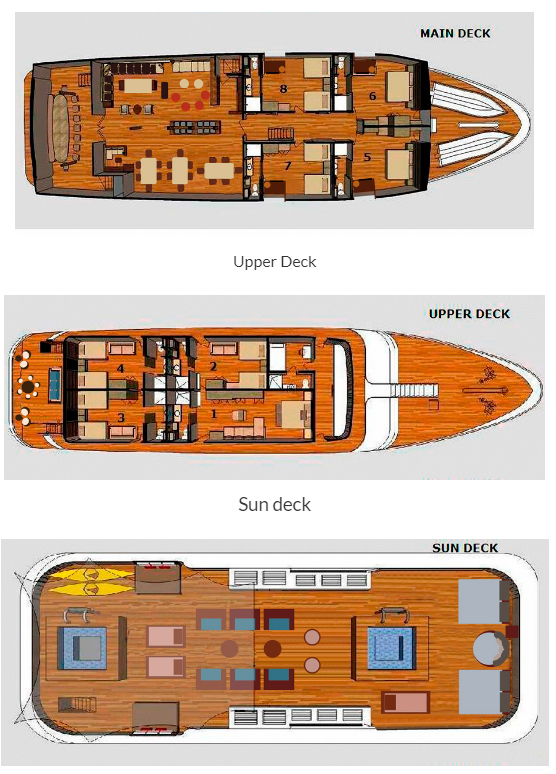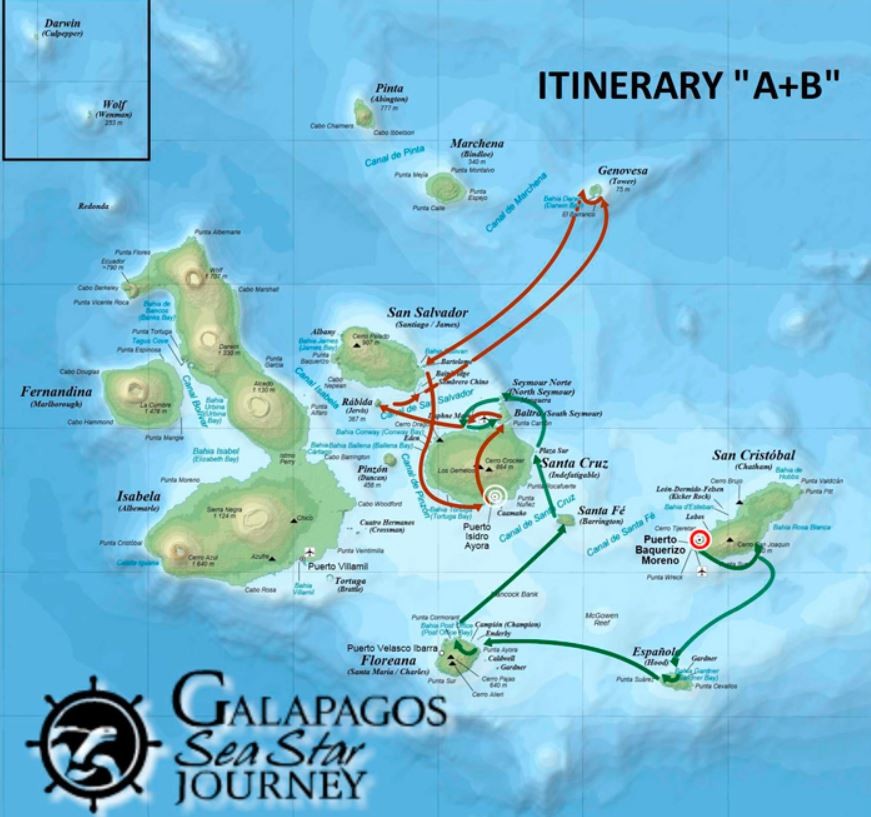
If you are looking for a more complete adventure in the Archipelago then you should definitely consider our 9-nights cruise for an amazing complete circuit from the Southern to the Northern Islands and the most interesting sites of the Central Galapagos enjoying fantastic visits to Española, Floreana, Genovesa, North Seymour and more. A total of 10 magnificent and live-filled islands to enjoy an unforgettable journey.
- San Cristobal Island
- Española Island
- Floreana Island
- Santa Fe Island
- North Seymour Island
- Santa Cruz Island
- Genovesa Island
- Bartolome Island
- Santiago Island
There are no future departures for this trip at this stage.
Galapagos Sea Star

Galapagos Sea Star The Galapagos Sea Star has a maximum capacity of 16 passengers, featuring seven spacious Galapagos Suites (approx. 25,2 m) and one Sea Star Suite (approx. 35,2 m) equipped with panoramic windows to enjoy the wonderful landscapes of the islands. All suites have a private bathroom, hot/cold water and air conditioning (with independent controls). Twin beds (or one faux queen bed) and connected suites are available for families.
Local and International dishes – especially designed by our chef – are served in the cozy atmosphere of our dining room. Our yacht offers a large solarium with shaded and uncovered areas, two Jacuzzis and comfortable sun loungers. Social areas include a Saloon, mini-library and video library as well as a play zone for kids (during family departures). Snorkeling equipment and kayaks are available too without any extra charge.
Galapagos Sea Star complies with local and international safety regulations. In addition, we implement sustainable practices throughout our journey to protect the fragile environment of the Galapagos archipelago.
All guests will enjoy the well-furnished areas offering comfort and privacy. Galapagos Seaman has a maximum capacity of 16 passengers allowing both intimacy and camaraderie at the same time. There are several resting areas for those who are looking for a quiet place to relax during their Galapagos trip with family and friends in the lazy mid-afternoon sun, or likewise after a busy day of swimming, snorkeling, kayaking, or walking on one of the Galapagos Islands.
To check out the gorgeous ocean views with fellow shipmates, guests can spend some time on the spacious sundecks. Whether you feel like getting a little sun or want the best place to enjoy the gorgeous sunsets over the Galapagos Islands, the sundecks are the best place to be.
For the adults who might want to relax and kick back, there is a great bar and lounge.



